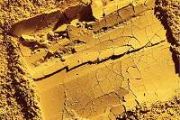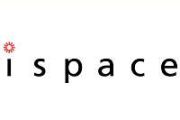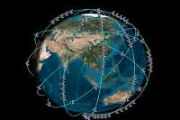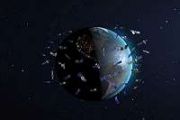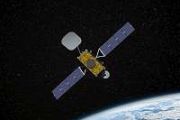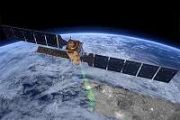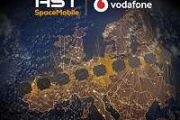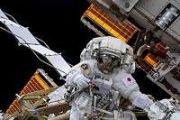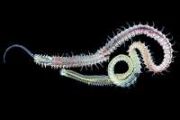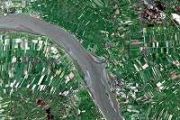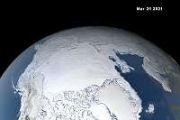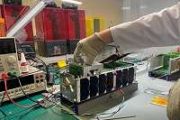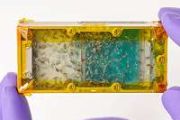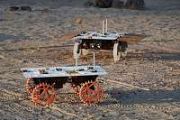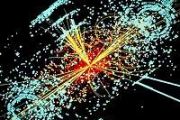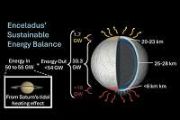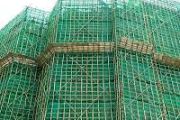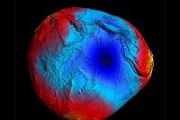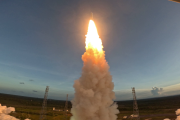
Copernical Team
Satellogic announces expansion of Aleph-1 constellation following Transporter-6 launch
 Satellogic Inc. reports the deployment of four satellites, launched with SpaceX at Cape Canaveral Space Force Station. Each of the spacecraft have made contact with Satellogic's ground station network and confirmed good health across all subsystems.
The SpaceX Transporter-6 mission was completed Tuesday with a two-stage rocket delivering these four satellites to a sun-synchronous low-Earth
Satellogic Inc. reports the deployment of four satellites, launched with SpaceX at Cape Canaveral Space Force Station. Each of the spacecraft have made contact with Satellogic's ground station network and confirmed good health across all subsystems.
The SpaceX Transporter-6 mission was completed Tuesday with a two-stage rocket delivering these four satellites to a sun-synchronous low-Earth Viasat awarded 5 year $325M IDIQ contract by US Special Operations Command
 Viasat Inc. (NASDAQ: VSAT) has been awarded an indefinite delivery, indefinite quantity (IDIQ) contract award worth up to $325 million over a five-year period to support the U.S. Special Operations Command (SOCOM). This sole-source IDIQ is an extension of a $350 million IDIQ contract awarded to Viasat in 2017.
Under the contract award, Viasat will continue to provide advanced mission equip
Viasat Inc. (NASDAQ: VSAT) has been awarded an indefinite delivery, indefinite quantity (IDIQ) contract award worth up to $325 million over a five-year period to support the U.S. Special Operations Command (SOCOM). This sole-source IDIQ is an extension of a $350 million IDIQ contract awarded to Viasat in 2017.
Under the contract award, Viasat will continue to provide advanced mission equip Modified gravity, galactic rotation curves, modified inertia and dark matter
 One of the mysteries of the universe is that Einstein's general relativity, which is a relativistic theory of Newton's universal law of gravity, requires large amount of dark matter in individual galaxies and in the vast space of the universe. Dark matter inferred by general relativity has never been identified in non-gravitational experiments.
This opens up the possibility that gravity's
One of the mysteries of the universe is that Einstein's general relativity, which is a relativistic theory of Newton's universal law of gravity, requires large amount of dark matter in individual galaxies and in the vast space of the universe. Dark matter inferred by general relativity has never been identified in non-gravitational experiments.
This opens up the possibility that gravity's PSI Io Input/Output observatory discovers large volcanic outburst on Jupiter's moon Io
 A large volcanic outburst was discovered on Jupiter's moon Io by Jeff Morgenthaler of the Planetary Science Institute using PSI's Io Input/Output observatory (IoIO).
PSI Senior Scientist Morgenthaler has been using IoIO, located near Benson, Arizona to monitor volcanic activity on Io, since 2017. The observations show some sort of outburst nearly every year, but the largest yet was seen in
A large volcanic outburst was discovered on Jupiter's moon Io by Jeff Morgenthaler of the Planetary Science Institute using PSI's Io Input/Output observatory (IoIO).
PSI Senior Scientist Morgenthaler has been using IoIO, located near Benson, Arizona to monitor volcanic activity on Io, since 2017. The observations show some sort of outburst nearly every year, but the largest yet was seen in Sidus Space awarded Bechtel Cable Assembly contract for Mobile Launcher 2
 Sidus Space, Inc. (NASDAQ:SIDU), a Space-as-a-Service company focused on mission critical hardware manufacturing combined with commercial satellite design, manufacture, launch, and data collection today has been selected by Bechtel Corporation to manufacture cables for the NASA Mobile Launcher 2 project.
Sidus was previously awarded a contract to fabricate custom cables and populate unique
Sidus Space, Inc. (NASDAQ:SIDU), a Space-as-a-Service company focused on mission critical hardware manufacturing combined with commercial satellite design, manufacture, launch, and data collection today has been selected by Bechtel Corporation to manufacture cables for the NASA Mobile Launcher 2 project.
Sidus was previously awarded a contract to fabricate custom cables and populate unique China's space exploration spurred by helping humanity
 All of China's activities in outer space are intended for the country's social, economic and technological development rather than for the "space race" with other nations, said insiders in China's space industry.
"We carry out spaceflights to develop high technology and improve economic growth and people's living standard. We don't take part in the space race with any other countries becau
All of China's activities in outer space are intended for the country's social, economic and technological development rather than for the "space race" with other nations, said insiders in China's space industry.
"We carry out spaceflights to develop high technology and improve economic growth and people's living standard. We don't take part in the space race with any other countries becau China not in 'space race', industry insiders say
 All of China's activities in outer space are intended for the country's social, economic and technological development rather than for a "space race" with other nations, according to insiders in China's space industry.
"We carry out spaceflights to develop high technology and improve economic growth and people's living standard. We don't take part in a space race with any other countries b
All of China's activities in outer space are intended for the country's social, economic and technological development rather than for a "space race" with other nations, according to insiders in China's space industry.
"We carry out spaceflights to develop high technology and improve economic growth and people's living standard. We don't take part in a space race with any other countries b D-Orbit Launches two ION Satellite Carrier on its seventh orbital transportation mission
 D-Orbit, the space logistics and orbital transportation company, launched Second Star to the Right, the seventh commercial mission of ION Satellite Carrier (ION), D-Orbit's proprietary orbital transfer vehicle (OTV), and the first mission carrying to space two IONs on a single launch.
The Falcon 9 rocket lifted off today, January 3rd, 2023, at 9:56 a.m. ET (14:56 UTC) from the Space Launch
D-Orbit, the space logistics and orbital transportation company, launched Second Star to the Right, the seventh commercial mission of ION Satellite Carrier (ION), D-Orbit's proprietary orbital transfer vehicle (OTV), and the first mission carrying to space two IONs on a single launch.
The Falcon 9 rocket lifted off today, January 3rd, 2023, at 9:56 a.m. ET (14:56 UTC) from the Space Launch Momentus launches Vigoride Orbital Service Vehicle on Transporter-6 Mission
 Momentus has seen its second demonstration flight of the Vigoride Orbital Service Vehicle (OSV) launched into low-Earth orbit aboard the SpaceX Transporter-6 mission earlier today. Momentus established contact with its Vigoride vehicle on its first orbital pass and confirmed that both solar arrays are deployed, and the vehicle is generating power and charging its batteries.
The Vigoride OS
Momentus has seen its second demonstration flight of the Vigoride Orbital Service Vehicle (OSV) launched into low-Earth orbit aboard the SpaceX Transporter-6 mission earlier today. Momentus established contact with its Vigoride vehicle on its first orbital pass and confirmed that both solar arrays are deployed, and the vehicle is generating power and charging its batteries.
The Vigoride OS NASA CubeSat Launch Initiative Deploys 150th from Space Station
 Astronauts aboard the International Space Station released four CubeSats into low-Earth orbit Dec. 29, marking the 150th deployment for NASA's CubeSat Launch Initiative.
The CubeSats, part of an educational launch satellite mission, include:
+ MARIO from the University of Michigan
+ petitSat from NASA's Goddard Spaceflight Center
+ SPORT from NASA's Marshall Space Flight
Astronauts aboard the International Space Station released four CubeSats into low-Earth orbit Dec. 29, marking the 150th deployment for NASA's CubeSat Launch Initiative.
The CubeSats, part of an educational launch satellite mission, include:
+ MARIO from the University of Michigan
+ petitSat from NASA's Goddard Spaceflight Center
+ SPORT from NASA's Marshall Space Flight 
